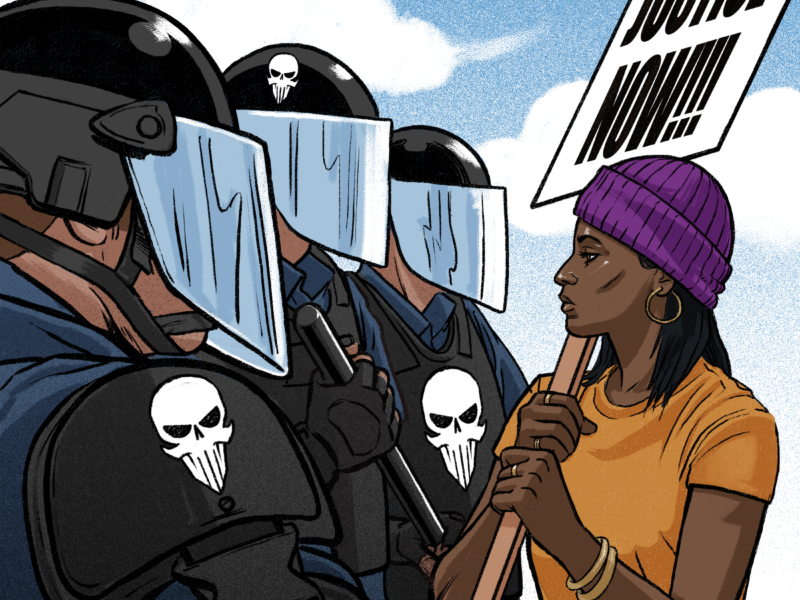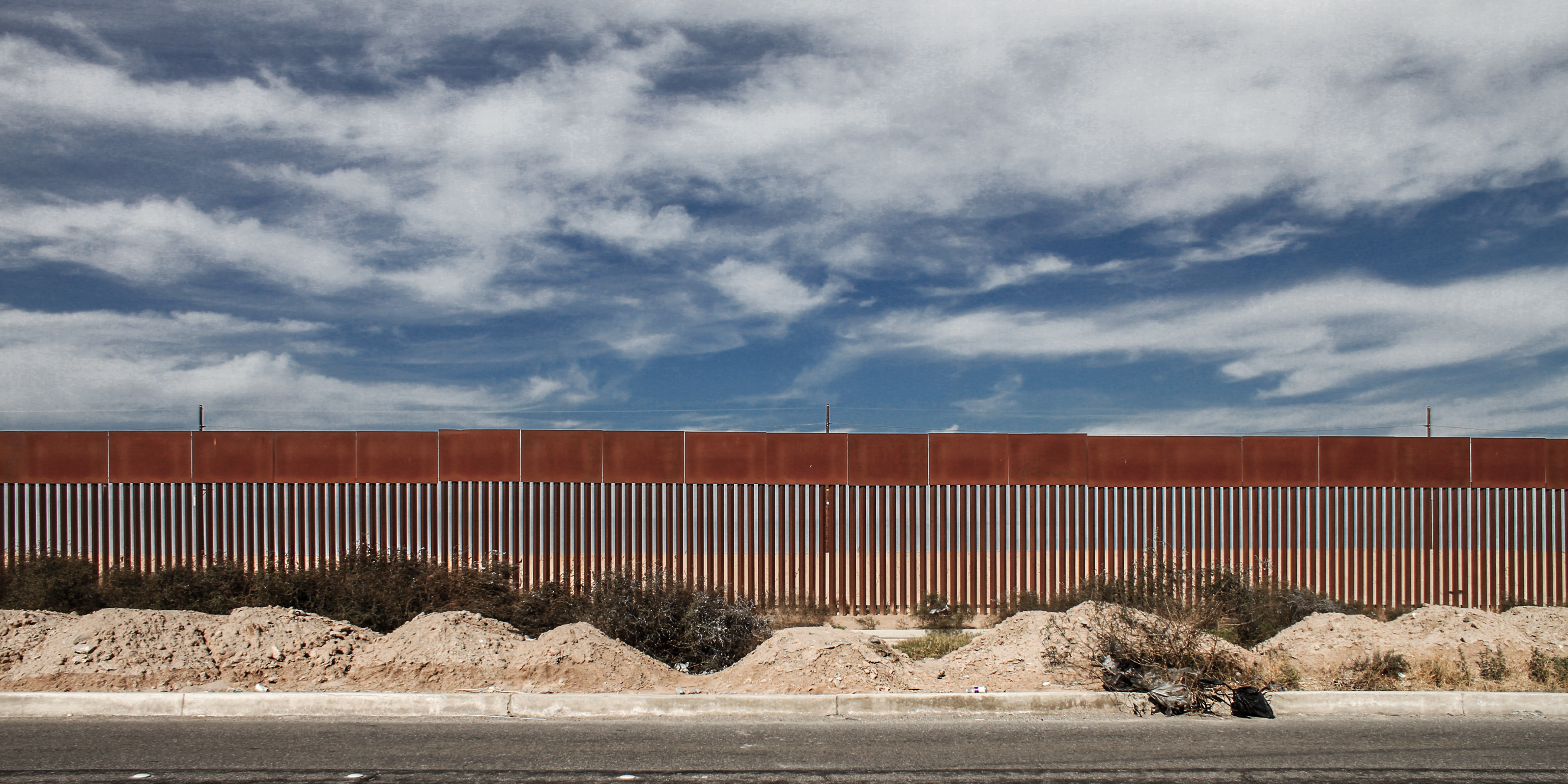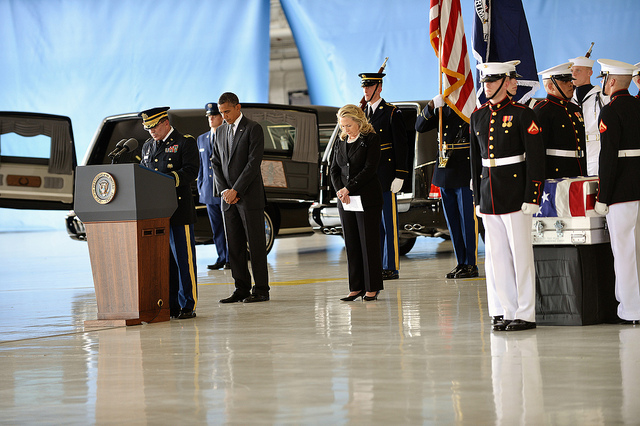Guest post by Menaka Philips and Sequential Potential
An unlikely figure has come to the fore in debates about racially charged violence in America: The Punisher, a vigilante icon known for his exceptional violence in the superhero genre. Punisher’s emblem—a stretched white skull—has been adopted by white nationalist groups and political extremists, including those among the insurrectionists who stormed the Capitol on January 6 last year.
Strikingly, Punisher is increasingly popular among law enforcement officers. Following nationwide protests of George Floyd’s murder, a retrofitted Punisher skull featuring a black and white American flag and a blue line was seen decaled on police vests and vehicles. Some officers have gone so far as to cite the emblem “as a symbol of the war against those who hate law enforcement.”
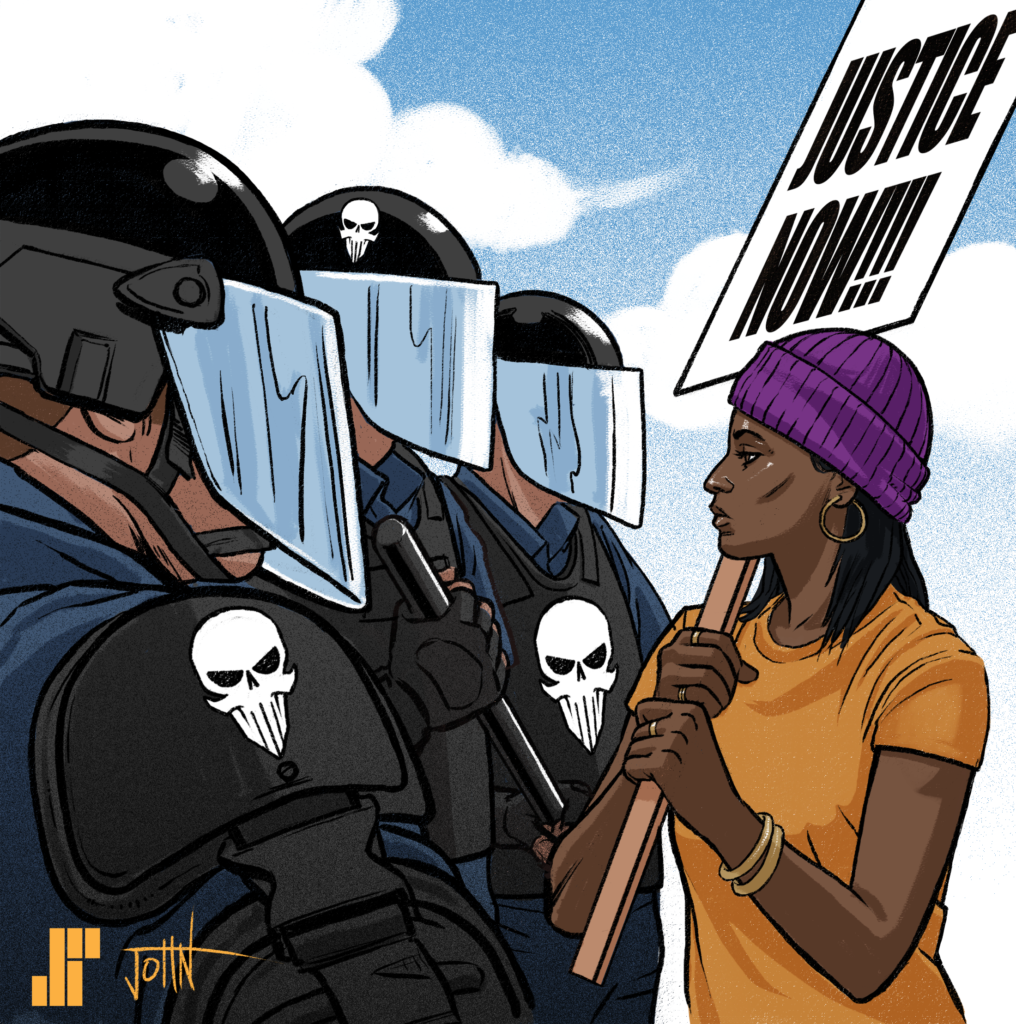
How has this vigilante icon gained a following among cops and MAGA insurrectionists alike? Punisher’s appeal lies in his unrestricted relationship to violence, a relationship guaranteed by his status as a white man. His skull now signals a political claim to violence as a means of enforcing America’s racial caste system.
A former soldier, Punisher (aka Frank Castle) is disillusioned by his time in the military and suffers from the violent loss of his family. This might make his vigilantism acceptable to many audiences—but the brutality with which Castle executes his enemies is bound to his white male status in several ways.
First, Punisher’s violence is explosive, ruthless, and validated by loss—of family, status, and social stability. Second, the character’s unmediated access to guns visually signifies his power to “police the line” between good and evil, a line Punisher himself determines. And third, his violence is repeatedly excused by representatives of the American state and ordinary civilians. As one CIA official tells him after a season-long killing-spree: “You were betrayed. Some kind of justice was done. And we hope that’s enough for you.”
The rationalization of violence granted to Punisher is rarely granted to minority heroes in the superhero universe. Black superheroes and women, for instance, are restricted in the kinds of force they can deploy in response to trauma or threat.
Take the widely popular Netflix adaptation of Luke Cage. The titular hero—a bulletproof Black man with his own tragic past—is rarely allowed to express anger, much less violence, with the uninhibited vehemence Punisher displays. Cage’s physical strength is comparatively muted, highly controlled, and rarely bloody. He never kills. Moreover, his actions are rarely excused by institutional authorities. The first season ends with his arrest for escaping from the prison in which he was tortured.
As a Black hero, Cage’s violence must be regulated to appear acceptable to white viewers. As a white hero, Castle’s violence has no limits.
For American audiences, the racial discrepancy between what forms of violence are deemed acceptable reflects and confirms real-life inequalities. The 2020 Black Lives Matter protest in DC faced a heavily militarized police response, with the National Guard preemptively deployed to line the steps of the Lincoln Memorial. The contrasting absence of a prepared response on Capitol Hill, despite warnings and ample time to plan, suggests an inability to perceive threats in the form of white bodies.
Set against this reality, the appearance of superhero iconography in the public sphere communicates a great deal, not only about who is authorized to use violence, but also about how they can do so in ways that will be judged legitimate. That Punisher is being appropriated by white nationalists and members of the law enforcement community in the wake of calls for racial justice reflects what Toni Morrison once called the “true horror of lost status” and the rage that accompanies it. Punisher offers symbolic refuge for those who view themselves to be in a war to preserve the privileges of whiteness.
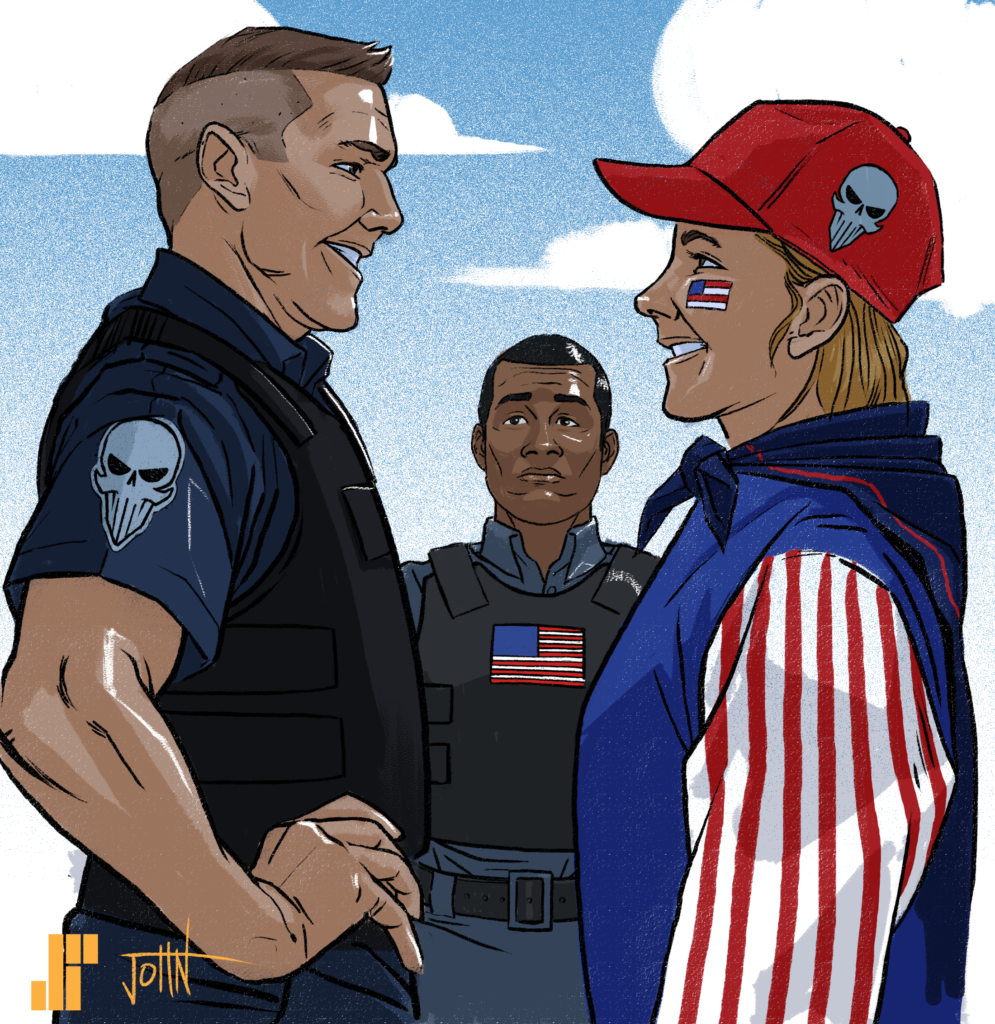
But where Punisher’s enemies come in the form of corrupt officials and criminal citizens, white nationalists, Capitol insurrectionists, and other Punisher “fans” consider civilian movements like Black Lives Matter and the “corrupt” system that failed to bring Trump back to power, the enemy.
Marvel is facing calls to retire Punisher from its pantheon of superheroes, with many arguing that his emblem is becoming synonymous with right-wing extremism. Ironically, his creator, Gerry Conway, did not intend him to be a symbol for the American security state or for its racial biases: rather the character was developed in the 1970s to critique American militarism and the failures of the American justice system. In response to the character’s racialized appropriations, Conway and others have lobbied to recast Punisher to be “Latino or black or Asian.”
But this call misses a fundamental aspect of the character’s viability as a hero in the American imagination, namely, that his unrestricted relationship to violence is itself gendered and racialized. Punisher is excused time and again precisely because violent extremes have long been authorized for white men. He makes sense as a vigilante icon in a society that rationalizes and humanizes white male violence.
To imagine a Black, Latino, or Asian man—or woman—as the new Punisher requires more than Hollywood recasting. It requires an audience that can understand their rage and brutality as legitimate. But that understanding has yet to be found in a country shaped by a history of white grievance and the violent power it has long held over the nation. That is why the everyday work of seeking social justice remains a challenging, but genuinely heroic, enterprise.
Menaka Philips is an assistant professor in the Department of Political Science at Tulane University, New Orleans, Louisiana. Images created by Sequential Potential.

